Libby Fischer Hellmann's Blog, page 15
January 6, 2017
Goodreads Giveaway Time!
Hi, everyone. Here’s something to make your New Year a bit more interesting (I hope). My new book, WAR SPIES AND BOBBY SOX will be released February 28, 2017, but you can win 1 of 3 print copies now by signing up for a copy at Goodreads! Enjoy the read, and I hope you will leave a review when you’re done.
.goodreadsGiveawayWidget { color: #555; font-family: georgia, serif; font-weight: normal; text-align: left; font-size: 14px;
font-style: normal; background: white; }
.goodreadsGiveawayWidget p { margin: 0 0 .5em !important; padding: 0; }
.goodreadsGiveawayWidgetEnterLink {
display: inline-block;
color: #181818;
background-color: #F6F6EE;
border: 1px solid #9D8A78;
border-radius: 3px;
font-family: "Helvetica Neue", Helvetica, Arial, sans-serif;
font-weight: bold;
text-decoration: none;
outline: none;
font-size: 13px;
padding: 8px 12px;
}
.goodreadsGiveawayWidgetEnterLink:hover {
color: #181818;
background-color: #F7F2ED;
border: 1px solid #AFAFAF;
text-decoration: none;
}
Goodreads Book Giveaway

War, Spies & Bobby Sox
by Libby Fischer Hellmann
Giveaway ends January 28, 2017.
See the giveaway details
at Goodreads.
The post Goodreads Giveaway Time! appeared first on .
December 3, 2016
Part 2: #Snowaudio! (Holiday Giveaway)



Hi again, everyone. I’m back with the second part of my holiday gift to you, and if you love to listen to audiobooks, you’re in luck!
Over the next couple of weeks, I’ve joined with literally DOZENS of other authors to bring you a program called SNOWAUDIO. You can find it on Facebook by searching “#snowaudio.”
Personally I’ll be offering 3 audiobooks, for which I’d love reviews on Audible:
Jump Cut
Nobody’s Child
A Picture of Guilt
If you’d like a free coupon for one of these, just mosey on over to my Facebook page here to enter. And let it snow!
Happy Holidays!
The post Part 2: #Snowaudio! (Holiday Giveaway) appeared first on .
December 1, 2016
My Holiday Giveaway Extravaganza!
Hi all. T he holidays have started in earnest, and I’ve got all sorts of gifts for you this month. Btw, when I say you, I mean YOU, my reader friends. These aren’t for anyone else (unless you want to give them away)… they’re meant to tide you over when you’re shopping, cooking, partying, and generally doing too much too often! You deserve a quiet hour or two just to escape, refuel, and refresh with some wonderful reads.
he holidays have started in earnest, and I’ve got all sorts of gifts for you this month. Btw, when I say you, I mean YOU, my reader friends. These aren’t for anyone else (unless you want to give them away)… they’re meant to tide you over when you’re shopping, cooking, partying, and generally doing too much too often! You deserve a quiet hour or two just to escape, refuel, and refresh with some wonderful reads.
So.. the extravaganza will unfold in THREE parts. Today, December 1, is PART ONE. I’ll post PART TWO AND THREE within a couple of days. Ready? Here we go.
Holiday Hamper
I love the word “hamper.” We Americans usually talk about dirty laundry when we mention hamper, but for our cousins across the pond, a hamper is a basket, and this basket is full of ebooks (Including two of mine) that you can win.
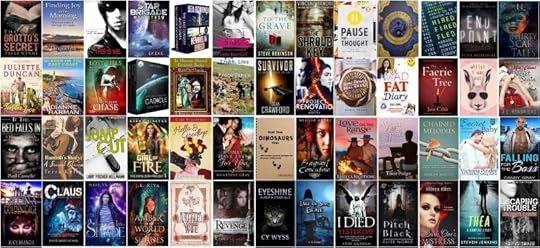
Take a look at all of these books… you could win them all simply by signing up for the give-away here. There will only be a few winners. Btw, when you look closely, you’ll see JUMP CUT, my most recent Ellie Foreman thriller, is among the mix. More about that later. Just know that I’ve discounted the price. A lot.
Wait…there’s MORE!
Don’t want to wait to see if you win? Some of the authors, including me, are GIVING 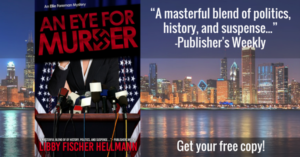 away ebooks. Right now. FREE! All you have to do is click here and check out the “20 Free Books to Download.” I’m giving away my very 1st Ellie Foreman thriller, AN EYE FOR MURDER, and I’d love you to take me up on my offer. I hope it will be the beginning of a “beautiful friendship.”
away ebooks. Right now. FREE! All you have to do is click here and check out the “20 Free Books to Download.” I’m giving away my very 1st Ellie Foreman thriller, AN EYE FOR MURDER, and I’d love you to take me up on my offer. I hope it will be the beginning of a “beautiful friendship.”
So that’s Gift Giveaway Extravaganza #1. Come on in! And check back in 2 or 3 days when the next gifts will be offered.


The post My Holiday Giveaway Extravaganza! appeared first on .
November 23, 2016
Recount? Please?
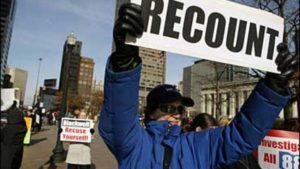
A group of respected computer scientists have spotted a serious anomaly in voting results in Wisconsin, Michigan, and Pennsylvanis, and they say it warrants an audit.
The story started in May, when the Democratic National Committee discovered suspicious behavior on its computer network. It called in the security firm CrowdStrike, who found two hacker groups lurking on the system, one of which had been there more than a year. The hackers had targeted the network’s communications and were busy researching opposition candidates, according to ex-FBI man Shawn Henry, now chief security officer at Crowdstrike. He attributed the hack back to the Russian government, who he says were, “involved in an espionage campaign – essentially collecting intelligence against candidates for the US presidency.”
The voting irregularities dogging the election results span the three critical battleground states mentioned above. Apparently Hillary Clinton attracted 7 percent fewer votes in counties relying on electronic voting machines compared with traditional optical scanners and paper ballots. 7% may not sound like much, but in a landscape where every vote counts, the aggregate vote count of around 55,000 could have swung all THREE states to Clinton, giving her the Presidency. Computer scientists have called for a recount in all three states and, apparently, Clinton’s team are actively discussing the situation. But they only have until Friday to decide whether to file a suit for an audit.
The computer scientists include J. Alex Halderman, Director of the University of Michigan Center for Computer Security and Society, a highly credible expert who knows his stuff. He believes Clinton’s unexpectedly poor performance in some counties reveals a highly questionable trend.
Halderman and John Bonifaz, the attorney interested in bringing the case, first reported their suspicions in New York magazine. As the group told Podesta and Elias, they haven’t found any real evidence of a hack… yet. But the strange pattern that emerged was unusual enough raise alarm bells and certainly merits an independent third-party review.
Let’s put it this way: If Trump was on the receiving end of this news instead of Hillary, what do you think he would be doing right now?
The post Recount? Please? appeared first on .
November 16, 2016
Banish the Gloom with A Place to Call Home
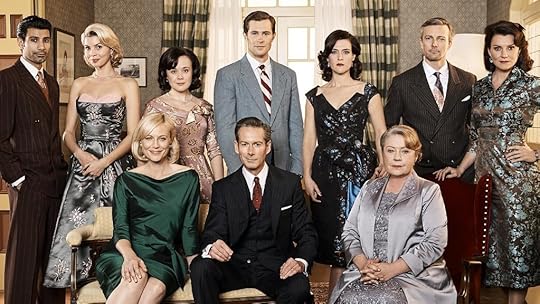
Trump is busy embarrassing the country. 2016 is predicted to be the hottest year on record, bringing climate change worries to the fore. Many of us are still in mourning after the election, and practically no one around the world is sanguine about the future. Let’s face it — we’re going through a very gloomy period.
Happily, there’s a bright side. An escape hatch is waiting for you, in the form of the excellent Australian TV series, A Place To Call Home. In fact, Season 4 debuts in the US on Thanksgiving Day! It’s such a wonderful show, far surpassing Downton Abbey, Upstairs Downstairs, or The Forsyte Saga, that I’ve gone all fan-girl and joined a Facebook group devoted to it. So if you’re feeling like the sky has fallen and you need a distraction, read on.
Classy Aussie drama to die for
A Place to Call Home debuted on the Aussie Seven Network in late April 2013, billed as a melodrama about a woman who returns to post-war 1950s Australia after surviving World War II in Europe. The series takes place in the fictional town of “Inverness” in rural New South Wales outside Sydney. It tells the story of Sarah Adams, played by the captivating  Marta Dusseldorp. Sarah, a nurse, clashes with the wealthy matriarch Elizabeth Bligh, played by Noni Hazlehurst, and their conflict is at the heart of the program, at least for a few seasons.
Marta Dusseldorp. Sarah, a nurse, clashes with the wealthy matriarch Elizabeth Bligh, played by Noni Hazlehurst, and their conflict is at the heart of the program, at least for a few seasons.
The series is the brainchild of Bevan Lee, writer and TV drama creator, who is well known and respected for his love of strong, complicated and compassionate women. The drama is set against a backdrop of great social change in 1950s Australia, and proved an instant hit when it first aired. Australian audiences around the country were glued to the show, which enjoyed spectacular ratings.
A Cliffhanger Surfaces
However, a major glitch surfaced during 2014, in the middle of Season Two. The Seven Network cancelled the show, feeling that the audience was too old to appeal to advertisers, and too expensive to produce. The producers created a series two finale full of twists and turns, and that was the end. Or that’s how things were supposed to roll.
 However, APTCH fans were so loyal and passionate that they made their feelings clear on Facebook and online petitions, and managed to create a media uproar. Enter the Australian HBO, Foxtel, which ordered a further two seasons and the series’ fans went absolutely wild. Eighteen months after its so-called death, filming for Season three kicked off.
However, APTCH fans were so loyal and passionate that they made their feelings clear on Facebook and online petitions, and managed to create a media uproar. Enter the Australian HBO, Foxtel, which ordered a further two seasons and the series’ fans went absolutely wild. Eighteen months after its so-called death, filming for Season three kicked off.
Meanwhile over here, PBS decided it was worth looking at. Sure enough, a few months later, in April 2015, A Place to Call Home crossed the Pacific and started making waves in the US. Before long it was aired on eight PBS markets including Seattle, Atlanta, and Indianapolis. Then Amazon jumped aboard, and through its affiliation with Acorn TV, we Americans now have the opportunity to get addicted en masse. I dropped everything to watch the first three seasons (in record time I might add) and highly recommend it to anyone who likes a little history, a little mystery, and lots of scandal.
Like post-war America, 1950s Australian society was rife with sex, death, and secrets, most of it shoved under the surface for politeness’ sake but powerful all the same. When Sarah Adams, a woman with a mysterious past, returns to Australia after a two decade absence, the idyllic Inverness lifestyle gradually works its magic, helping her heal from the horrors of the war. But the ensemble cast guarantees that other issues are explored and addressed too, including politics, homosexuality, abortion, sexual assault, and marrying “beneath” one’s station.
A huge part of its appeal is that it’s packed with powerful female characters. While Hollywood is still busy discussing the need for strong female roles or dumbing them down when they do cast them, the Aussies in APTCH have gone ahead and created a slew of intelligent, engaging female characters in addition to Sarah and Elizabeth. Even the nefarious villain is a woman.
I’ve managed to watch most of Season Four already, and it was just as good as the previous three, which you can watch anytime. Best news of all? Season Five has JUST been announced and will be available this time next year.
Binge-watchers, give thanks. We could do with some light this holiday in our world right now.
The post Banish the Gloom with A Place to Call Home appeared first on .
November 4, 2016
Evil Kin – The Tragedy of Chicago’s Suh Family
About 8 months ago I was interviewed as a neutral 3rd party for a tabloid TV show about a gruesome murder in Chicago. The case involved a sister who convinced her brother to kill her boyfriend, and her boyfriend too (probably) kill her mother. It happened years ago, but Investigation Discovery decided to explore it in their new series, Evil Kin. The Suh espisode premieres November 10th.
Behind every murder, beneath the scandal, horror, media coverage, and police procedure lies a human tragedy. And the case of Catherine Suh is no exception.
 Catherine was someone who loved luxury cars, big-spending boyfriends, and designer clothes. By all accounts she had always been hungry for money, and lots of it. She was rebellious and disobedient, with little respect for her parents who, because of their traditional Korean background, forbid her to behave as the “American teenager” she longed to be. But her long term boyfriend Robbie O’Dubaine adored her, despite his family’s reservations.
Catherine was someone who loved luxury cars, big-spending boyfriends, and designer clothes. By all accounts she had always been hungry for money, and lots of it. She was rebellious and disobedient, with little respect for her parents who, because of their traditional Korean background, forbid her to behave as the “American teenager” she longed to be. But her long term boyfriend Robbie O’Dubaine adored her, despite his family’s reservations.
In 1985 Catherine’s father died of cancer, and for a while mother, sister, and brother co-existed. But things soon started to go wrong. Catherine was even more rebellious and difficult, and just two years later, their beloved mother was brutally stabbed 37 times in her Evanston dry-cleaning store. Police always suspected Catherine was a behind the murder but couldn’t prove it, because O’Dubaine and Suh gave each other an alibi. Catherine and her brother Andrew subsequently inherited $800,000.
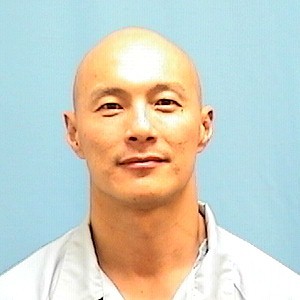 Now orphaned, Andrew clung to his sister, who became his legal guardian and surrogate mother. Andrew grew to idolize his big sister and did whatever she wanted. In the fall of 1993 Suh managed to convince her younger brother Andrew, a 21-year-old college student, to shoot O’Dubaine dead in the couple’s Bucktown apartment. Andrew was eventually found guilty and sentenced to a 100 year jail term.
Now orphaned, Andrew clung to his sister, who became his legal guardian and surrogate mother. Andrew grew to idolize his big sister and did whatever she wanted. In the fall of 1993 Suh managed to convince her younger brother Andrew, a 21-year-old college student, to shoot O’Dubaine dead in the couple’s Bucktown apartment. Andrew was eventually found guilty and sentenced to a 100 year jail term.
Why did Andrew agree to murder his sister’s boyfriend? Unlike his sister, Andrew was an academic star, an athlete, and an obedient son. After the death of their father years before, Andrew had promised to help and protect his mother. Catherine convinced her brother that her boyfriend, Robert O’Dubaine, with whom she shared a Bucktown house, was the man who murdered their mom (It may well have been true). She told Andrew that the only honorable way ahead was to kill O’Dubaine in revenge. Suh arranged the murder of Robbie O’Dubaine and claimed his $250,000 life insurance policy,
Suh was charged in O’Dubaine’s murder, but she made bond and moved to Lake Point Tower in Chicago, living an easy life in a luxurious high-rise. She kept up her old habits of hunting down rich boyfriends and did her best to re-invent herself as real estate agent Kasia Kane. Two days before her trial began in 1995, however, Catherine fled to Hawaii where she continued the deception. She found a surfer boyfriend in record time and persuaded him to buy a more stylish condo.
However, even a murderer can be worn down by circumstances. After being featured on TV’s America’s Most Wanted show in January 1996, in March Suh handed herself in to the FBI in Honolulu. Cook County Criminal Court Judge John E. Morrissey ordered Suh, now 27, to begin her life sentence.
Typical of a sociopath, Suh refused to apologize to her former boyfriend’s family, or look in their direction at her sentencing. She stared straight ahead, stony-eyed and unrepentant. But as Robbie’s mother Margaret Nolan said afterwards, “I can start remembering Robbie and feel good that justice has prevailed.”
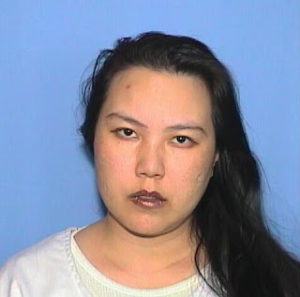 PS In addition to her murder sentence, Catherine also received a concurrent 30-year sentence for armed robbery. And after four months in prison, Suh received an additional two years for aggravated battery after lashing out at a prison staff member.
PS In addition to her murder sentence, Catherine also received a concurrent 30-year sentence for armed robbery. And after four months in prison, Suh received an additional two years for aggravated battery after lashing out at a prison staff member.
Let me know if you watch the show next week and what you think of the story.
The post Evil Kin – The Tragedy of Chicago’s Suh Family appeared first on .
October 26, 2016
Criminal Forensics: Not So Fast…
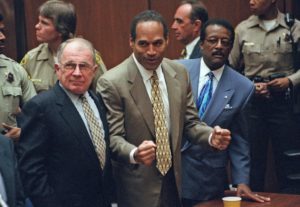 One of the reasons I started writing crime fiction twenty years ago was my fascination with criminal forensics. Like everyone else in the country, I was glued to the TV during the OJ Simpson trial. Apart from my surprise at his acquittal, I was introduced to a brave new world. Prior to the trial I had no idea law enforcement could analyze blood spatter, or shoe prints, or what the direction of knife wounds could say about the perpetrator. It was a revelation that eventually led me to writing.
One of the reasons I started writing crime fiction twenty years ago was my fascination with criminal forensics. Like everyone else in the country, I was glued to the TV during the OJ Simpson trial. Apart from my surprise at his acquittal, I was introduced to a brave new world. Prior to the trial I had no idea law enforcement could analyze blood spatter, or shoe prints, or what the direction of knife wounds could say about the perpetrator. It was a revelation that eventually led me to writing.
However, twenty years later you’d be forgiven for thinking law enforcement has at its disposal a trove of rock solid, scientifically proven tools that reveal criminals’ guilt beyond any doubt. The truth is dramatically different. Polygraph testing has long come under fire for being unreliable; criminal profiling has been criticized as no better than guesswork; and some say forensics is in crisis as more tools, methods and systems turn out to be less than trustworthy.
One of the problems is that forensic science was not developed by scientists. It was developed by law enforcement, by applying “common sense.” But as more criminal cases unravel, the lack of good science is seen as a primary cause.
Unreliable Polygraphs
According to the American Psychological Association the psychologist Leonard Saxe, PhD, believes that ‘The idea that we can detect a person’s veracity by monitoring psychophysiological changes is more myth than reality’. He said it back in 1991, so the technology has been questioned for some time.
The APA says:
“A particular problem is that polygraph research has not separated placebo-like effects (the subject’s belief in the efficacy of the procedure) from the actual relationship between deception and their physiological responses. One reason that polygraph tests may appear to be accurate is that subjects who believe that the test works and that they can be detected may confess or will be very anxious when questioned. If this view is correct, the lie detector might be better called a fear detector.”
Despite that, FBI agents still take regular Polygraph tests as part of the agency’s internal security protocol. That’s not to say nothing is being done. Some researchers recommend factoring in extra indicators like heart rate and skin temperature. Others are looking closely at tech like functional brain imaging to help measure deception, but there are questions about its effectiveness as well.
On the bright side, our court system, including the Supreme Court, has rejected polygraph evidence because it’s inherently unreliable. But polygraph testing is still used to screen personnel, establish if suspects and witnesses are telling the truth, and to monitor those on probation.
Criminal profiling guesswork
 In 2008 a review article by Snook, Cullen, Bennell, Taylor and Gendreau criticized criminal profiling. Called The criminal profiling illusion: What’s behind the smoke and mirrors?, it outed profiling as a pseudo-science based on flawed assumptions. The article maintained that criminal profiling is based on a set of psychological theories that were disproved during the 1960s, so-called trait theory. As the Debunking Denialism website says:
In 2008 a review article by Snook, Cullen, Bennell, Taylor and Gendreau criticized criminal profiling. Called The criminal profiling illusion: What’s behind the smoke and mirrors?, it outed profiling as a pseudo-science based on flawed assumptions. The article maintained that criminal profiling is based on a set of psychological theories that were disproved during the 1960s, so-called trait theory. As the Debunking Denialism website says:
“In some areas, such as physical attributes, profilers managed to out-compete the non-profilers. In other areas, such as cognitive professes, offense behavior and social history, the non-profilers performed better than profilers. Overall, profilers had a slight advantage.”
If you were on the jury of a criminal case, would a “slight advantage” be enough to make you trust a profiler’s verdict beyond reasonable doubt? The article even compares its credibility to that of astrology.
Bite marks, blood spatter and more coming under fire
When a forensic dentist claimed seven bite marks found on a dead body were ‘entirely consistent’ with dental impressions taken from a suspect, the police thought they’d got their man. Even though the tooth marks were the only physical evidence tying the suspect to the murder, the jury convicted him of second-degree murder and he was sent to prison for 25 years to life. Fifteen years later DNA tests proved the man innocent fifteen years later and set free. It might seem like a glitch. But over 200 innocent people have had their convictions overturned and in 50% of the cases poor forensic analysis helped send them to prison. Forensic dentistry is just one of the methods being questioned.
The scientific veracity of bite marks, blood-splatter patterns, ballistics, hair, fibers and handwriting analysis, even fingerprint tech, are all under scrutiny, but they’re all used by police. According to law professor Michael Saks from Arizona State University, in an article on the Popular Mechanics website,
“As you begin to unpack it you find it’s a lot of loosey-goosey stuff.”
What does the future hold?
A growing number of experts are demanding reforms. In 2005, Congress commissioned the National Academy of Sciences to explore forensics in US law enforcement. The resulting ‘blistering’ report revealed ‘serious deficiencies’ and suggested extensive reforms. And it made it clear that DNA is the only forensic discipline that has so far been proven “with a high degree of certainty”.
Hopefully the questionable methods will eventually be improved so they are more accurate. Or new methods will be developed and old ones dropped altogether. Until then, whether you’re innocent or guilty, this is not a great time to be dependent on the criminal justice system.
Unless you’re O.J.
The post Criminal Forensics: Not So Fast… appeared first on .
October 19, 2016
Conversation with Robert Jones, Dep. Director FBI Counter Intelligence, Part 3
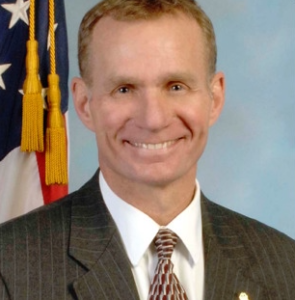 It’s said the average person in the US appears on security cameras six or seven times a day. I asked Robert Jones, FBI Deputy Director of Counter-Terrorism about that in Part 3 of our conversation on the March 2016 Second Sunday Crime show. Yes, he replied, it is true. In fact, video feeds gave the FBI a huge break in the Boston bombing case. In London a system of video cameras on every block of the city can pick up the trail of any individual walking the streets. Could that happen here, I asked? It’s doubtful, Mr. Jones said, but if you’re out in the open, the nature of the world you live in isn’t private.
It’s said the average person in the US appears on security cameras six or seven times a day. I asked Robert Jones, FBI Deputy Director of Counter-Terrorism about that in Part 3 of our conversation on the March 2016 Second Sunday Crime show. Yes, he replied, it is true. In fact, video feeds gave the FBI a huge break in the Boston bombing case. In London a system of video cameras on every block of the city can pick up the trail of any individual walking the streets. Could that happen here, I asked? It’s doubtful, Mr. Jones said, but if you’re out in the open, the nature of the world you live in isn’t private.
Say you identify a target who is trying to steal corporate secrets. What would be the legal redress?
The FBI encourages companies to work closely with them, using all the information the agency gathers to present a case to the US Attorney’s office and levy charges against individuals. They would be arrested and prosecuted. If they’re not in the US, it depends on the extradition treaty the US has with the country in question. China doesn’t help, the UK does. Sometimes the FBI launches a ‘lure’ operation, when someone doesn’t know they’ve been identified and can be picked up when they visit a country with an extradition treaty. But the biggest success comes via the FBI’s outreach programs. US businesses can reach out to the FBI, and even if they can’t arrest the alleged spies, they can often go after them in the civil courts.
Drones
Drones are moving from military to consumer toys. What are the pros and cons of that? The FBI doesn’t make laws, they enforce them. The FAA will eventually need to legislate for drone use, but a company is responsible for monitoring the air space over their own premises. Some big companies even have their own security apparatus to prevent drones spying.
Co-operation between the FBI and MI5, MI6
The FBI has a robust relationship with various overseas partners, and the most significant are the five eyes: the US, Canada, NZ, Australia, and England. The FBI works closely with these nations to endure their internal controls are similar.
Some intelligence agencies used a lot of private consultants. Does the FBI use private consultants in counter intelligence, and what do they do?
Yes, the FBI uses contractors, often in the intelligence field. They don’t have law enforcement power but they do look at info and produce reports based on the information they uncover. There are safeguards in place to protect against spying. A counter intelligence contractor needs a secret clearance, and the FBI makes sure the person abides by the safeguards. Most FBI employees take a 5 year polygraph test and a background investigation. Some private companies also require their people to take polygraph tests, and it might be a good idea. An employee’s right to privacy is down to the individual company.
How do companies know what to do if they suspect espionage?
Economic espionage advice is readily available online. Other than that it makes sense to adopt an FBI agent and set in place an insider threat program, some kind of process for early identification. As far as personal data theft goes, the less information you put online, the lower the threat. The biggest threat to the individual is personal data loss and theft, for example, the hack six months ago that saw someone steal data from thousands of government employees. The FBI has contracted with an organization that monitors the internet to see if that data is being used online.
This concludes the conversation with FBI Deputy Director of Counter-Intelligence Robert Jones. For more details I urge you to listen to the entire show here.
The post Conversation with Robert Jones, Dep. Director FBI Counter Intelligence, Part 3 appeared first on .
October 17, 2016
Conversation with Robert Jones, FBI Counter-Intelligence Security, Part 2
 Here is Part 2 of my conversation with Robert Jones which we taped last March. You can find the entire interview on the March Second Sunday Crime show here.
Here is Part 2 of my conversation with Robert Jones which we taped last March. You can find the entire interview on the March Second Sunday Crime show here.
Cybersecurity
We touched briefly on cybersecurity when I asked which is more common: hackers looking for credit card data or corporate spies? Mr. Jones said that as far as the FBI is concerned, hackers trying to steal customer data is more common. However, corporate espionage costs businesses much more and is a bigger threat. When I asked whether planting malicious software to damage corporation systems is dangerous, he replied: Sure, it happens, but corporate espionage can be more damaging, and said the issues surrounding hacking would be investigated by the FBI’s Cyber Intelligence Division.
Relationships
According to Jones, it makes sense for corporations to form a relationship with their local FBI field office and its leaders, especially the special agent in charge. Employee training in policies designed to protect trade secrets is vital, including abiding by the NDAs many employees are required to sign. It’s all about protecting your company’s “secret sauce.” If you have the recipe and you’re dependent on it to drive your business, you need to protect it. If the formula is a trade secret and it’s available to all 40,000 of your employees, it isn’t secret! Information should be limited to those who really need to know.
Hacking and Encryption
Encryption provides an answer to many security weaknesses. If a company has adequate encryption it can often bypass hackers. The FBI is certainly a fan of making sure information is properly protected. The most important thing for a company is to run a non-connected network that isn’t connected to the internet, which means there’s much less risk of being hacked.
What about so-called ethical hacking? It isn’t something the FBI does. Ethical hackers are sometimes hired by corporations to find the flaws and holes in a security system, but the FBI doesn’t have its own cyber crime people who can do that, certainly not from a counter-intelligence perspective.
Monitoring Employees
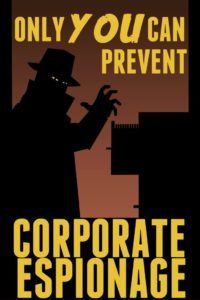 One issue front and center in today’s environment is a company’s ability to spy on its own employees – sometimes referred to ‘monitor and investigate’. Is that OK? It depends on the company. If you run a defense company with secret data, you want your people to sign an NDA. This consents to having all your work monitored, regardless of what you’re doing on the system, and can even affect private emails. Some companies search people’s backpacks, others put CCTV in parking lots. It’s down to the individual company how much or little they choose to “monitor” their people
One issue front and center in today’s environment is a company’s ability to spy on its own employees – sometimes referred to ‘monitor and investigate’. Is that OK? It depends on the company. If you run a defense company with secret data, you want your people to sign an NDA. This consents to having all your work monitored, regardless of what you’re doing on the system, and can even affect private emails. Some companies search people’s backpacks, others put CCTV in parking lots. It’s down to the individual company how much or little they choose to “monitor” their people
Questions? Comments?
Part 3 is coming soon.
The post Conversation with Robert Jones, FBI Counter-Intelligence Security, Part 2 appeared first on .
October 5, 2016
Meet Robert Jones, FBI Counter-Intelligence Security, Part 1
 My latest Ellie Foreman book, Jump Cut, came out in March, 2016. Rather than talk about the book, I chatted to FBI Counter-Intelligence Deputy Director Robert Jones on the March edition of Second Sunday Crime. He’s been with FBI for 20 years, worked anti-terrorism, and is now with the counter terrorism division. He’s been in and out of Iraq over the years, became a Unit Chief, and now works in the upper tier of the FBI. In fact, our conversation was so fascinating, I’m going to break it up into three parts. This is Part 1.
My latest Ellie Foreman book, Jump Cut, came out in March, 2016. Rather than talk about the book, I chatted to FBI Counter-Intelligence Deputy Director Robert Jones on the March edition of Second Sunday Crime. He’s been with FBI for 20 years, worked anti-terrorism, and is now with the counter terrorism division. He’s been in and out of Iraq over the years, became a Unit Chief, and now works in the upper tier of the FBI. In fact, our conversation was so fascinating, I’m going to break it up into three parts. This is Part 1.
When I asked him what he wanted to be when he grew up, he answered he still isn’t quite sure. As a young man, he knew he wanted to serve his country. As a Marine infantryman he had no idea he’d end up working with the FBI. There is an unwritten rule that every Marine is expected to recruit another into the bureau (that’s how he came to them), and he has brought several Marines into the organization over the years.
Why counter-intelligence? It isn’t unusual for people to become more generalists as they grow; it’s beneficial to the organization since there’s overlap—the same techniques with slight variations are used across all sorts of disciplines. For example there are similarities between the way the FBI handles corporate and economic espionage and terrorism, which in turn follow some of the same steps as robbery and kidnapping.
The largest threat to private industry today is economic espionage and the theft of trade secrets. American companies invest time and money in research and development before a product makes it to market, for example spending vast amounts of money developing a new drug. Foreign adversaries with competing interests can either do their own R&D and compete legally, or steal that technology and bring a product to market fast without spending their own funds. This kind of thing costs US businesses hundreds of millions of dollars every year. Btw, that’s what happens in Jump Cut. 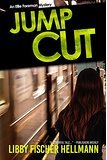
At what point does FBI get involved? The sooner the better. As soon as a company knows something nefarious is happening, the faster the FBI gets involved, the better the chance of success. How might a company be aware of theft? It depends on the company. The FBI has an Insider Threat Program, which reveals typical indicators. Some thefts involve a trusted insider, and a handful of common denominators drive them to betray. They might have been passed over for promotion, they might start showing up late, logging into the company system in the wee hours, or using it for personal reasons. The company’s own internal processes often provide clues. Sometimes it’s money, where an employee is in financial distress. The sources of trouble are most often foreign rather than domestic, and China is currently one of the biggest offenders.
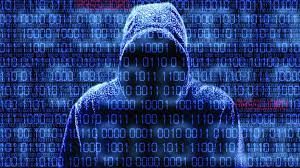 How can a rogue company, domestic or foreign, penetrate a corporation? Although we talk mostly about hackers these days, that’s not the only way. Espionage can include foreign companies that want to set in place joint ventures, or visiting delegations from overseas. Sometimes there are outright bribes. Conferences can be a vulnerable point.
How can a rogue company, domestic or foreign, penetrate a corporation? Although we talk mostly about hackers these days, that’s not the only way. Espionage can include foreign companies that want to set in place joint ventures, or visiting delegations from overseas. Sometimes there are outright bribes. Conferences can be a vulnerable point.
If a company has evidence of a breach, how would FBI proceed? In a computer intrusion, the FBI would pinpoint how the intrusion took place, helped by the FBI’s Cyber Division, then pin down the attribution – who did it. Is it an entity from an at-risk foreign power like China or Iran? Is it a competitive partner from a different state? Once they know that, the FBI checks who works on the product, then they look for the signs and symptoms of a suspected insider – who has access to the data, who has been passed over for promotion, who has financial issues, all these logical questions help the agency identify the perpetrator.
Do some companies prefer to do that kind of investigation themselves? Most companies have internal security processes and procedures, but they can’t investigate to the depth the FBI can. They can do homework for the FBI, and there’s close liaison. In fact, the FBI runs a number of popular outreach programs to get in front or organizations who commonly experience economic espionage. Their Business Alliance Program, for example, has 15,000 members, and the National Secure Business Alliance Council includes reps from 30 very large companies. They do the same with academia, talking to colleges via the National Security Education Advisory.
Questions? Let me hear them. Part 2 will be posted later this week.
The post Meet Robert Jones, FBI Counter-Intelligence Security, Part 1 appeared first on .



